#short moral stories in tamil
Explore tagged Tumblr posts
Text
#10 BEST Short Stories in Tamil with Moral for Kids | தமிழில் குறுகிய ஒழுக்கக் கதைகள்#short moral stories in tamil#small tamil stories with moral
0 notes
Text
youtube
#stories#tamil stories#motivation#moral stories for kids#thenkachi#short story#entertainment#kathaigal#education#Youtube
2 notes
·
View notes
Text
#tamil stories#stories in tamil#tamil moral stories#tamil story#story in tamil#tamil fairy tales#stories tamil#tamil short stories#moral stories in tamil#bedtime stories tamil#tamil books pdf download#story tamil#moral stories#how to download instagram stories in tamil#how to download facebook stories on gallery in tamil#tamil kathaigal#download instagram stories#bedtime stories#sites to download tamil books pdf
0 notes
Text
Kat's Top Books of 2023
Was inspired by someone else's post to do a Kat's top 5 books of the year post culling from my #recently reads. I read a lot this year and encountered a lot of great titles, but these ones were particularly memorable:
Vagabonds! by Eloghosa Osunde. Interconnected short stories following the lives of queer misfits and outcasts in Nigeria. I have a passage saved on my phone. I read this back in January so I don't remember the contents as much as the feelings it evoked, but it was beautiful and haunting.
Don’t Fear the Reaper by Stephen Graham Jones. Read My Heart is a Chainsaw first if you haven't already. The books pit Jade Daniels, a young woman with a trauma she's refusing to face head on but instead buries in an obsession with the moral logic of slasher films, against irl slashers who keep coming to town. Bonus points for wired jaw representation, aka my future.
Brotherless Night by V.V. Ganeshananthan. Set during the Sri Lankan civil war following a young Tamil woman who's caught in the middle as loved ones join the Tigers. It starts with a striking passage that you think means one thing and then comes back later in a way you don't expect that's a huge gut punch.
The Spear Cuts Through Water by Simon Jimenez. A high fantasy story that is also a diaspora story as the characters' scattered descendants watch history play out. Dips into everyone's thoughts to create a chorus POV that's really effective. Note - incredibly gruesome. Organs, lovingly described, etc.
The Golem of Brooklyn by Adam Mansbach. A stoned art teacher accidentally creates a golem who decides his mission is to stop an upcoming alt right rally. Explores the interactions between the old world and the new and the weight of historical trauma - every golem shares the same ancestral memory. Carries its tensions to the very last page and leaves the reader to supply the answers.
(Honorable mention to System Collapse which didn't make it into the #recently read posts, but I had a great time!)
Nonfiction shoutout to A City on Mars which sourced so many delightful space facts and gave me a lot to think about re: SF worldbuilding that is at all grounded in reality. Plus it was really funny.
52 notes
·
View notes
Text
Moral Tales of Hitopdesh (பிரசங்கத்தின் ஒழுக்கக் கதைகள்) (Tamil Edition)
Price: (as of – Details) The Hitopdesh is a remarkable compilation of short stories composed by Narayana Pandit around a thousand of years ago. The stories which are more or less similar to the Panchatantra stories which have the priceless treasure of morality and knowledge. The stories feature animals and birds as main characters. The term ‘Hitopdesh’ is a combination of two words. ‘Hita’ means…

View On WordPress
#amazon ebooks for kindle unlimited#amazon kindle ebooks#amazon.in/ebooks kindle#can kindle tablets be used to access indian ebooks and audiobooks#chatgptʼ free kindle ebooks#ebooks jeffrey archer kindle version#ebooks kindle cart#ebooks kindle free for prime#ebooks kindle free for prime in tamil#ebooks kindle free novel series#ebooks kindle innovate and thrive jyoti yadav#ebooks kindle karachi to malabar an odyssey of love#ebooks kindle the golden road#ebooks kindle the psychology of money#ebooks kindle unlimited#ebooks kindle verity#ebooks kindle vortex#free kindle ebooks download#free kindle law ebooks#gujarati kindle ebooks#kindle ebooks by anupama jeremiah#kindle ebooks english#kindle ebooks english free#kindle ebooks for free#kindle ebooks for free tamil#kindle ebooks for kids#kindle ebooks free with prime#kindle ebooks hindi#kindle ebooks hyperspace#kindle ebooks in hindi
0 notes
Text
a study of kaatru veliyidai
kaatru veliyidai is a film that has gotten mixed reviews. the critics seem to shower praises for this movie whilst the general public almost ignore its existence. when talking about mani ratnams works the general public tend to always point out his past works, besides oh kadhal kanmani, when it comes to his best. the stories always feel close to home, the characters tend to feel like your next door neighbors, and the characters are very easy to understand. the more into mani ratnams career the more we see him find new ways to tell stories but yet staying somewhat true to his esque.
kaatru veliyidai however is quite hidden in the dark. the story revolves around our two main characters: VC acted by karthi and leela abraham acted by aditi rao hydari. the movie starts off normal, similar to previous mani ratnams works. the character meet and fall in love all choreographed with beautiful screenplay making the audience wish to be in their shoes. but a short while in you see the dichotomy of both characters. VC is misogynistic, chauvinistic, and arrogant while on the contrary leela is independent, grounded, and isnt having it with VC. quickly they both run into the “cant leave you cant live without you” trope and you see a different side of tamil cinema.
growing up watching tamil cinema you tend to see majority of the male characters similar to VC. but what makes them different is that the media makes them look justified. these characters hide behind the label of being in being “cool” and “manly” and you ignore their shitty behaviors because they (for example) saved a village. VC however is being criticized for his actions, though not verbally by someone else, he goes through a form of internal understanding that he is a horrible human being. VC feels different, and its what makes kaatru veliyidai so good and yet so underrated. in an era of film making where we see men doing bad things as normal we now have a male lead where his actions are seen in a bad light, hence letting the audience support the female protagonist.
the true core of the movie lies in the hands of aditi rao hydari. her acting is very delicate, you can see that shes a romantic, you can feel that romance. her actions feel like they are based off a novel or cinema. her character feels like a character within the universe of kaatru veliyidai, maybe a persona in which leela had chosen when growing up. aditi rao hydari does an amazing job with the cycle of abuse, showing truly how bad it is for her from her perspective. she isnt here to raise a moral outcry. her character isnt trying to save the world or make any changes to it. but instead you get to see an abuse relationship unfold while you make your own judgement of wether its progressive or not.
leelas character feels similar to that of another one from mani ratnam’s past films, tara from oh kadhal kanmani. despite both characters being different in terms of exposition or plot, they both arent there to be an idol of progressiveness. mani ratnams biggest strengths is to hold topics of modern day without pushing down a narrative. instead you see a beautiful piece of cinema but is able to take away an underlying meaning of maybe modernity or progression. both leela and tara are independent and grounded, they both make their own life choices and they both are alike but not.
so why didnt kaatru veliyidai work? the real answer may never be found but we could speculate. my biggest theory is that the general audience could not understand that karthi is acting as an abusive boyfriend. only up until now is there characters that aren’t always morally good. when we tend to think of a main male character we tend to only highlight the bright parts of him, the good parts that we want to show, never the bad ones. especially for the caliber of karthis characters i think the audience was not ready to see their beloved star in a negative light.
another speculation into which kaatru veliyidai might have failed is that its too cinematic for people to understand. kaatru veliyidai never directly tells you that “hey. vc is a dick and leela is being abused” but instead you spend the next 2 hours in the theater watching this unfold and it could be seen as slow of some.
either way, kaatru veliyidai isnt the perfect movie nor is it my favorite from mani ratnam. but if i where to put it at somewhere in top 3-5 i would. i just wish that more movies like this come out, i truly am tired of seeing a copy paste of male and female characters with just different universes
0 notes
Video
youtube
பிச்சைக்காரன்! #kathaigalayiram #kathaigal1000 #tamilaudiostory #கதைகள்...
#Stories for kids#Tamil kids stories#Story for kids#Stories in tamil#Moral stories#Tamil short stories#Bedtime stories#Kathaigalayiram#Tamilaudiostory#Kathaigal1000#பிச்சைக்காரன்#கதைகள்ஆயிரம்#zen story tamil#storyteller in tamil#motivational story in tamil#inspirational stories#Best tamil stories
1 note
·
View note
Video
youtube
ஆபத்தான பாதை | The Creepy Way Part 1 | Tamil Moral Stories For Kids | தம...
#tamil cartoon#short story#kid stories#funny videos#moral stories#chiku tv tamil#tamil vides#tamil child stories#tamil cartoon stories
1 note
·
View note
Video
youtube
విలువగల మూలిక | Magical Herb And Monster | Moral Story for Kids | Telugu...
#chiku tv tamil#short stories#funny videos#tamil cartoon#kids stories#animal stories#moral tamil#telugu cartoon#telugu stories#telugu videos#telugu kahaniya#telugu short videos#latest telugu cartoon#trending telugu stories#telugu movies#telugu video story
1 note
·
View note
Text

BLOG REINTRO
notice how i said blog and not writeblr 🤔 that's cause this isn't just a writeblr anymore! i draw a lot [im literally going to attend a design college] and my current consuming-all-my-thoughts ideas are all webcomics so this blog will now be a mix of both writing and art stuff [just like a webtoon fr fr]
ANYWAY HI!! im al, they/them, tamil, and ive done this like seven times now im very tired guys. you might have seen me on here as @/alicewestwater before i changed it to fit my rat cook movie obsession. my biggest hobby is stalking around the house whispering to myself about my ocs while my family watches in horror and confusion. stuff im doing rn [other than your mom rofl rofl]:
gonna start my first year of college! ill be living in a new city and rooming with friends but most importantly i will be taking at least three of my stuffed animals along with me
love love love orange. there isn't a better colour. i will gladly fight anyone on this.
you know how you often have that one song stuck in your head? well, i have this oc pairing called luniper and they have been living rent-free in my head for years now can someone kick them out please 🙂
queer as hell!! i’m aromantic and trans and you will find that every single one of my wips has a short feral character who’s either aro or trans or both because #projecting
my biggest flaw as a person is that i use the 🤔 emoji so often i don't even know if it's ironic or not anymore
also my sense of humour is akin to that of a 12-year-old white boy, sorry in advance
i am currently going through my sad bitch phase so if you see me whisking up another coming-of-age young adult novel about kids in their last year of high school just look in the other direction please.
MY WIPS
LITTLE BY LITTLE: queer south indian coming of age webcomic! follows siblings sameera and anbu being disasters and dealing with really good-looking rivals, rekindled childhood friendships and b*ard exams.
SOMETHING BORROWED, SOMETHING BORNE: ya novel about three best friends in their last year of high school. follows vincent, the sleep-deprived art kid stressing out over college, madhavan, the popular guy who has no idea what he’s doing in life and rivers, the laidback resident Cool Kid who’s still reeling from a loss of family. idk what the plot is yet but the characters are spicy
A MILLION HOMES AND NONE OF THEM IS YOURS: litfic novella about a mother-daughter duo who find themselves in a dangerous, magical world after a fight and are forced to sort out their tumultuous relationship in order to find their way back before the mother’s pregnancy is due.
also final note i love stories about queer people of colour in either wholesome contemporary settings or insane off-the-charts morally grey fantasy worlds so if that sounds like something you’re writing let’s chat!
#🏳️⚧️🏳️⚧️🏳️⚧️#also i decided to be an extra bitch and animated a banner just for this post#writeblr#writeblr intro#announcements
76 notes
·
View notes
Link
பேராசை ஆண் - The Greedy Man | Bed Time Stories for kids | Tamil Fairy Tales | Tamil Moral Stories
Tamil Moral Stories, tamil stories, Moral Stories in tamil, tamil story for children, tamil short stories, tamil, tamil stories for kids, moral stories, stories in tamil, tamil childrens stories, tamil kids stories, stories for kids, panchatantra stories, fairy tales in tamil, tamil fairy tales, tamil children stories, tamil kids, பேராசை ஆண், the greedy man in tamil, greedy man story in tamil, greedy stories in tamil, greedy man tamil story, kids,
0 notes
Text
#tamil stories#tamil short stories#tamil#tamil stories for kids#stories#tamil story#tamil pdf stores#bedtime stories#stories tamil#kids tamil stories#stories in tamil#tamil moral stories#news tamil#stories for kids#tamil kids stories#tamil magical stories#moral stories in tamil#magical stories in tamil#magic land tamil stories#tamil story books pdf#kids stories in tamil#pdf story in tamil#startup stories tamil#success stories tamil
0 notes
Text
INTERCULTURAL COMMUNICATION: WHAT ARE THE BARRIERS AND 09 WAYS TO IMPROVE IT
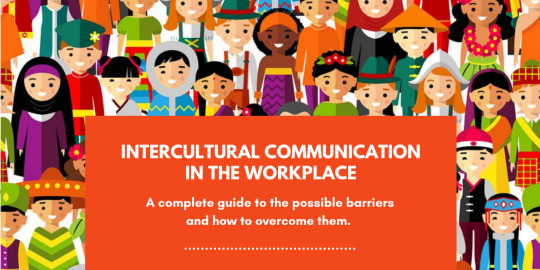
The Quarantaniversary is here- it’s almost a year since the COVID-19 pandemic dawned upon us all. And we all witnessed a TREMENDOUS change in our workplaces.
Nevertheless, remote work surprisingly assisted globalization, and companies are hiring more people from abroad than ever. With people ready to telecommute, workplaces are getting more diverse. Sure, this scenario isn’t going to last same forever- but we can already witness a lot of challenges that follow remote work- intercultural communication being one of them.
It is no secret why communication tops the list of priorities that a company needs to inculcate among its employees. Intercultural communication makes it trickier to accomplish, especially with people literally working miles apart.
Many organizations are opening their gates soon, and the cultural differences may intensify if you don’t start working on it now. Do you wonder if your employees are happily interacting despite these differences?
In this blog, we will discuss how to-
1. Assess your staff’s intercultural communication skills;
2. Identify the hindrances;
3. And rectify them for good.
BONUS- READ, HOW TO CREATE AND DEFINE A WORK FROM HOME POLICY FOR YOUR COMPANY
WHY IS INTERCULTURAL COMMUNICATION IMPORTANT?
Differences in culture are inevitable, and it takes a lot for people to bridge the gap. Lack of management in intercultural communication paves the way for misunderstandings and a feeling of being left out.
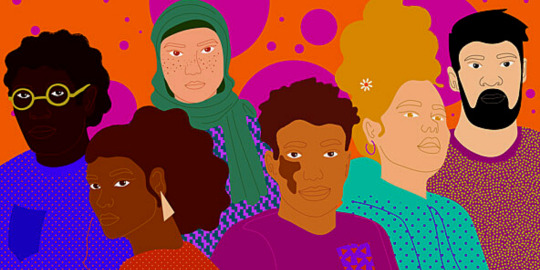
I’ll explain my point by citing an example. The west urges its people to leave their parents’ home and start a family at a very young age, while the east encourages a culture of living with parents and grandparents. It is one of the very few differences that you will find even when working with employees belonging to different cities in your own country.
A workplace that understands the diversity in traditions, customs, and cultures make its staff feel welcomed. It leads to better team communication, which ultimately develops a healthier and dynamic work environment. To be successful in any sector, organizations must understand and meet the communication patterns of their clients, employees, investors, and other associated people.
HINDRANCES IN INTERCULTURAL COMMUNICATION
KNOW WHAT YOUR TEAM LACKS
Now that you understand the why, let’s get into the what part.
There are four broad cultural differences that you’ll spot among people around you. Your employees are no exception. Improve your intercultural communication by identifying their weak points. Look for the ones that they lack so that you can rectify them ASAP. After all, acceptance is the first step to betterment!

Here are the key cultural aspects that your staff may lack:
1. EDUCATIONAL
School is the second home of a child, and it plays a vital role in shaping our thoughts, mannerisms, and problem-solving skills. Our background depends on our school, teachers, locations, and the associated national and district laws.
Companies hire people for different positions based on their qualifications. When they work together on a project, they implement varied methods based on their backgrounds to tackle the same set of problems. The results can either be pretty cool or a disastrous mess.
2. RELIGIOUS
An employee’s religious and spiritual affirmations have a significant impact on their priorities and behavior. Religious and spiritual beliefs have the power to impact a person’s perception, analytical abilities, and decision-making skills. As a result, they may even have a difference in ethical behavior.

Everyone has a right to express their religion. There could be a possibility of differences in opinions at the workplace and cold wars. Beware!
3. ETHNIC
Ethnicity is different from race. It is not biological and depends on a person’s learned behaviors due to their culture, nationality, religion, ancestry, heritage, and linguistic backgrounds. Jewish, Tamil, Pashtun, Cambodian, Sindhi, etc., are a few examples of ethnicity.
Naturally, separate ethnicities have a different train of thought and exposure. For instance, people who grow up in a spiritual and sacrificing environment avoid conflicts at all costs. Others may be direct in communication.
4. RACIAL
The race is a biologically defined term. Black, White, Asian are a few examples, for instance. Races have NOTHING to do with the person’s ethics and working skills. But they do have an impact on their accent, day-to-day behavior, and stuff like that.

While racial diversity is no big deal in the modern workplace, racist slurs, biased behavior, and mixed perceptions are still prevalent. Strong intercultural communication intertwines people and prevents this from happening.
BTW, HERE ARE 07 MOST IMPORTANT MANAGEMENT SKILLS & HOW TO DEVELOP THEM
5. GEOGRAPHICAL
The location you grow up in defines the environment you are exposed to- leading to developing varied dressing, speaking, eating, and living habits. Working with people from different geographical upbringing may sound cool and all, but it is actually the primary cause of stereotypes.
People who dwell from the same place tend to bond faster. And while that’s no big of a deal, it may lead to groupism and people feeling alienated.

6. LINGUISTIC
Some countries have an official language for their state, while some don’t. It is plausible due to the languages spoken by the natives. While English is the most acceptable among them all, people also come with different accents.
Long story short, language remains a barrier in any workplace that doesn’t stick to hiring only the locals. Paving the way for a friendly yet strong intercultural communication promotes bonding among all and keeps conflicts at bay.
7. GENERATIONAL
The generation you are born in has a darn tootin’ impact on your ideas on professionalism, ethical behavior, collaboration, creativity, and overall communication. Gen Z, for instance, prioritizes career and stability, while Boomers have a softer spot for their home and family.
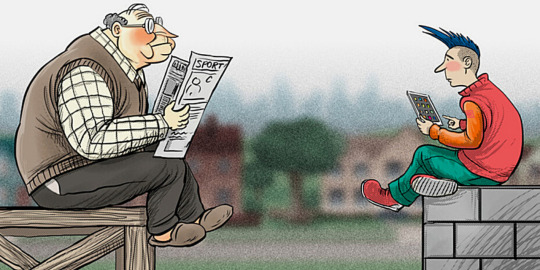
Different generations are going to look at stuff with different glasses. A GenXer’s creativity and Baby Boomer’s experience may yield the best results. But it requires constant understanding, respect, and fair inclusion of all.
8. SOCIO-ECONOMIC
A person’s income and socio-economic status (SES) speak a lot about the privileges, opportunities, and resources that they usually get. Contrary to popular belief, SES has a major impact on our behavior and analytical skills.
SES contributes to an employee’s functioning, mental & physical health, stress level, and morals. If left to perish, it leads to judgments, biases, and information silos.
IMPROVING INTERCULTURAL COMMUNICATION AT WORKPLACE
There are cultures within cultures, and communication is the only path to collaboration. There’s nothing worse than a lack of understanding among people due to their misaligned assumptions and cognitive biases.
The strategies listed below are vital to creating cross-cultural harmony. However, I have witnessed points 4, 5, 7, and 9 making the maximum impact on intercultural communication:
1. AVOID USING SLANG

The non-natives of your place may understand what you say but may not understand the exact idea and context behind it. Slang, phrases, and idioms are cool, but why not keep it simple? Even the natives may get confused if your language gets too complicated.
Everyone has an interpretation of their own. And it is natural to read between the lines when things are not clear. An inaccurate interpretation, in such cases, will end up confusing or may even offend your staff. Play safe ALWAYS.
2. HANDLE HUMOUR WITH CARE
Cracking jokes is no big deal, and you don’t always have to be a grumpy boss. But remember, not everyone understands humour. So if you decide to go for it, make sure everyone understands it clearly. Cultural appropriation is a prerequisite, and you cannot compromise it for a few fake laughs. Go for neutral jokes that seem appreciated and accepted in all cultures. (for instance, a knock-knock joke)
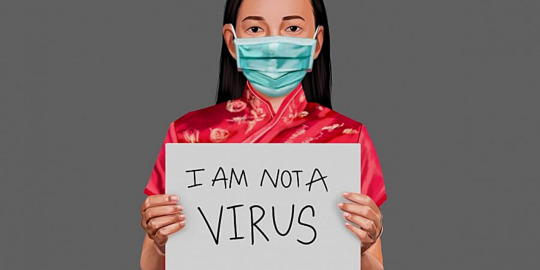
HRs and management need to understand how culturally leaned behavior affects communication. Fixing it reduces intercultural communication conflicts to a humongous extent.
3. ORGANIZE GAMES & ACTIVITIES
Collaboration is the key to better communication. And what’s a better way to collaborate than to organize non-work-related activities. When people talk about stuff other than work, they feel more connected and start opening up despite their differences.
As a matter of fact, people with a different culture are more interested in a place’s native culture. Games and activities are a perfect way to cheer things up when trying to improve intercultural communication.

4. HOLD DISCUSSIONS & DEBATES
Debates might be the last thing you’d want in your organization, but hear me out- when you encourage people to present their conflicting thoughts professionally, they learn how to be opinionated and yet hold back the offense. Debates are healthy, and they bring sportsmanship among the peers.
Group discussions are also an excellent way of teaching the employees how and why it is crucial to keep things clear and simple in a conversation. Intercultural communication can only strengthen when people polish their verbal as well as listening skills.
5. SPEAK SLOWLY
An intercultural workplace would definitely have employees with varied accents and familiarity with the language. When you speak at your usual pace, you become vulnerable to miscommunication, misinterpretation, and misunderstandings.
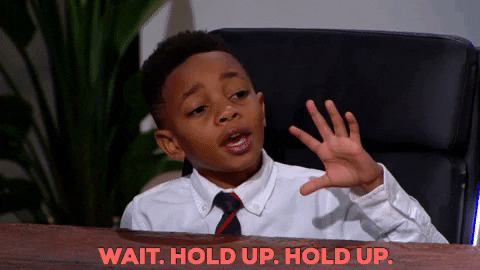
Modulating the speed will ensure that your words are loud and clear. But make sure you’re not too slow, or else people would drift off while listening, let alone improve the overall communication. And that’s a bummer!
ALSO READ, HOW TO TURN THE VIRTUAL WORKFORCE INTO REALITY?
6. KEEP NON-VERBAL MISINTERPRETATIONS IN MIND
Your body language is always a part of communication. And it doesn’t matter what your words say- your tone and posture add meaning to it. Focus on keeping your facial expressions and body language very neutral. You don’t always have to smile, but maybe stop crossing your arms and looking at your phone.
Sometimes the non-verbal misinterpretations are not very obvious, and you have to dig a bit deeper. For instance, the Japanese find it rude when someone points a chopstick at them while eating.
7. WORK ON COGNITIVE BIASES
Everyone is biased- that’s natural. But it’s very unethical to let the biases interfere with our decision-making processes at work. It doesn’t matter how you feel about stuff- you have to take a rational and practical approach to get an unbiased and appropriate solution.

Your cognitive bias stems from a lot of reasons and has a direct impact on your conversations. If not taken care of, it may make things bitter between people with a difference in opinion.
8. NEVER FRAME CLOSED QUESTIONS
Avoid direct questions that need an answer in yes or no. Some people find it rude to answer such questions without an explanation. They might as well go with a yes instead of saying no to someone’s face. It might sound a little absurd, but such behavior is also an influence of their background.
Open-ended questions that require a plausible explanation are better in such cases. As a bonus, you always get to understand the thinking process of your team. And you can always assign the right tasks to the right person in the future.
9. ENCOURAGE ACTIVE LISTENING
Out of the two fundamental parts of communication, people tend to only work on their speaking skills. Well, we all know that won’t work. After all, who likes sharing their thoughts with someone who won’t let them finish their sentences? To ensure a healthy and happening relationship among all, you have to make sure that people like each other’s company.

Intercultural communication is a responsibility. Encourage people to come up with doubts, suggestions, and queries. It helps break the information silos, and nothing gets missed or misunderstood.
READ MORE FROM OUR BLOGS,
WRAPPING IT UP!!
Cultural differences are bound to occur in any workplace. The key is to accept and understand them. Intercultural communication can yield creative results when utilized the right way. Try to make the best out of your intercultural work environment and never let your productivity go down.
Is there anything that I missed? Would you like to drop a suggestion/query? Let me know in the comments below. I would love to hear from you.
ANNYEONG!!

Originally Published On: EmpMonitor
#Employee Monitoring#Employee Management#Employee Productivity#Employee Monitoring Software#Intercultural Communication
3 notes
·
View notes
Text
Famous Tales of Panchatantra (பஞ்சதந்திரத்தின் பிரபலமான கதைகள்) (Tamil Edition)
Price: (as of – Details) The stories of Panchtantra are very old. They were originally written in Sanskrit. They are a collection of short stories which are not only interesting to read, but also the best guide to instil moral values among children. Every story imparts a moral value. That is why they are read with great interest by readers of all age groups.The word Panchtantra is a combination…

View On WordPress
#amazon ebooks for kindle unlimited#amazon kindle ebooks#amazon.in/ebooks kindle#can kindle tablets be used to access indian ebooks and audiobooks#chatgptʼ free kindle ebooks#ebooks jeffrey archer kindle version#ebooks kindle cart#ebooks kindle free for prime#ebooks kindle free for prime in tamil#ebooks kindle free novel series#ebooks kindle innovate and thrive jyoti yadav#ebooks kindle karachi to malabar an odyssey of love#ebooks kindle the golden road#ebooks kindle the psychology of money#ebooks kindle unlimited#ebooks kindle verity#ebooks kindle vortex#free kindle ebooks download#free kindle law ebooks#gujarati kindle ebooks#kindle ebooks by anupama jeremiah#kindle ebooks english#kindle ebooks english free#kindle ebooks for free#kindle ebooks for free tamil#kindle ebooks for kids#kindle ebooks free with prime#kindle ebooks hindi#kindle ebooks hyperspace#kindle ebooks in hindi
0 notes
Text
[MIRROR] Titillation and perversion: the cis lens of Super Deluxe
Posting a mirror of this: original at http://theworldofapu.com/super-deluxe-critical-analysis/
Super Deluxe (2019), directed by Thiagarajan Kumararaja, has been a polarizing film in my queer circle. To those convinced of its brilliance, it is nothing short of a cinematic revolution. However, to the rest of us, it is difficult even to describe how depraved the moral center of the movie is, surrounded as it is by an aura of big names lauding it as years ahead of its time. This becomes an especially difficult matter when the narrative of the film is praised for being trans-inclusive. Many see it as Tamil cinema’s big favour to transgender folks, which makes it that much harder to argue that the film is transphobic to its core.
Structured as a set of four seemingly disconnected storylines, which eventually converge in unexpected ways, Super Deluxe is a potpourri of things that sound like Really Cool Movie Ideas—shower thought after shower thought thrown at you, plot devices that may well have come from that one college friend obsessed with Quentin Tarantino. The cult success of Aaranya Kaandam (Kumararaja’s previous and first film) led to a breathless build-up around Super Deluxe, and that resulted in a movie so convinced of its own hype, that it never stopped to consider the fact that these Cool Movie Ideas may not fit coherently. The movie is always smugly convinced of its own brilliance, all the way from the titillating title sequence to the ending that featured a bizarre exposition (aliens give you cash! morality is relative!), revealing the film’s sheer contempt for the viewer’s intelligence. Leaving aside the gratuitous violence and the rampant transphobia, Super Deluxe is a drab movie at best.
To begin with, Super Deluxe is not kind to its cis women. It opens with Samantha playing an archetype of a modern woman that has plagued Kollywood since time immemorial. Her character, Vaembu, speaks about sex in a way that is reminiscent of a schoolboy’s fantasy, calling herself an ‘item’ by way of introduction. We see a neat correlation being drawn, between the sexual openness of the character and the trouble she is in. Later on in the movie, a weak attempt is made to subvert this portrayal, along the predictable lines of the How Many Partners Have You Had conversation. By that point, the plot seems to have lost any semblance of life. The less said about Leela, the better—Ramya Krishnan makes a brave attempt to authentically portray one of the most ham-fisted stereotypes of Sex Worker with a Heart of Gold I have seen yet from Mysskin (one of four writers credited on this movie).
However, the violence that registers most is the one that comes disguised as empowerment. The character of Shilpa, a trans woman, is played by actor and cis man Vijay Sethupathi. Shilpa’s story is the detailed recounting of every single way in which trans women can be humiliated. My favourite critical review of the filmmaking on display here comes from the blog The Seventh Art, where Srikanth Srinivasan notes that the camera and the soundtrack share the point of view of the aggressor time and again. We rarely see Shilpa’s plot from her own perspective; it is always the perspective of a condescending observer or a crying wife. One such instance of this voyeuristic framing and subsequent othering is the scene where Shilpa is shown draping a saree. She dresses herself in front of a mirror while her wife stands and watches, sobbing. The soundtrack is giggling out Maasi Maasam Aalana Ponnu, a song from the 1991 film Dharmadurai, mockingly dissonant from the context. The camera zooms into Shilpa smoothening her wig, and she has the slightest moment of genuine euphoria that she looks good for her walk. The camera, of course, makes fun of this vulnerability all along—titillating noises from the sex song still running, it switches over to the sobbing wife who says, “I don’t know what’s harder, having lived so long without a husband or having to live with a husband like this.” This is the point of view the camera wants you, the viewer, to have. It wants you to watch while ‘something like this’ gets humiliated. This is supposed to be the progressive portrayal of a trans woman in this movie, obsessed with her appearance, indifferent to her wife’s pain; a balding sex trafficker who dresses up while her wife watches.
Srikanth goes on to observe: “In the scene at the police station, the only point of view the audience is allowed to recognize is the sleazy cop’s. The cop, of course, is a caricature and the audience is made to feel morally superior to him, while not having anything to do with Shilpa beyond dispensing sympathy for her subhuman status. By making Shilpa the passive object of contempt, the film forestalls even the possibility of the audience’s identification with Shilpa that the casting of Vijay Sethupathi might have offered. There’s a special violence in the fact that the transference of identity that the film demands from its trans viewers for its other characters is not matched with a demand from its cis viewers towards Shilpa.”
It deserves to be said that it is profoundly unethical and transphobic to cast cisgender men to play trans women. Jen Richards put it across wonderfully in the Netflix documentary Disclosure (2020):
“Having cis men play trans women, in my mind, is a direct link to the violence against trans women. And in my mind, part of the reason that men end up killing trans women out of fear that other men will think that they’re gay for having been with trans women, is that the friends, the men whose judgement they fear of, only know trans women from media. And the people who are playing trans women are the men that they know. This doesn’t happen when a trans woman plays a trans woman.”
All the subplots share one thing in common: the setup is fantastically contrived with no aspersions to realism or believability, with the exception of sexual violence, which is gratuitous, uncomfortably real, and never-ending. Don’t get me wrong—I think there can be artistic value in making a viewer squirm in their seat, discomfited by sexual violence, especially if you’ve been a victim of it. However, to do so with no narrative significance and to follow it up by saying “Everything is Meaningless” is the kind of depravity that I could not stomach, in a movie that everyone seems to love. Ostensibly, there seems to be an uplifting and empowering message that is arrived at, but not through any meaningful transformation, or moral discourse, or even the triumph of good over evil. This is the thematic methodology of the movie: it first completely reinforces harmful stereotypes for the entirety of the plot, in excruciating detail, and then says, “I was just joking, a flyaway TV knocks out the sexual predator, isn’t life funny?”
The most egregious of these, to me, is the resolution of Shilpa’s narrative, when she comes back and speaks to her wife and son. “I didn’t think of you or your pain. I didn’t know that I would have a son who loved me and ask me why I left him,” she says.
Raasukutty and Jothi berate and gaslight this sobbing survivor of sexual assault, accusing her of being stone-hearted and plotting to leave her family. And then Raasukutty says reproachfully that although everyone else mocked her, he and his mother accepted Shilpa the way she was. “Did I or mother say a single word to you?” he asks. This is not true; Shilpa was thoroughly humiliated when she returned home, including by Jothi, who responds to her transition by alternating between shock, unveiled disgust, and mourning at lost masculinity. But coming from the mouth of precocious child Raasukutty, it is merely a reflection of cis-fragility that doesn’t even register they drove Shilpa away.
Shilpa sobs a little more. Raasukutty says, “I don’t care, be a man, be a woman, be whatever you want. Never leave us again.” The scene fades into black.
My blood boils.
How could this be the resolution? The movie features a trans woman being mocked in ways that feel like the camera is laughing at her, a trans woman being sexually assaulted, a trans woman who is told that expecting society to accept her is too much to ask, a trans woman who gets driven out of every place she wants to exist in, only for her to be told, “I don’t care who you are.”
“I don’t care who you are” is not acceptance. I might have forgiven it all if Raasukutty had instead said “Why did you leave me, mother?” But what we get instead is a return to square one: Shilpa being berated for not being a father, a father she never wanted to be.
Shilpa is never offered simple acknowledgement of her womanhood, or her personhood even. She is always treated as a thing, never a woman. She is seen as an aberration, something grotesque, and the progressive message seems to be that these grotesque things must be accepted for whatever they are. I keep going back to that scene of Shilpa draping a saree, and the awful cognitive dissonance of it. In the end Shilpa says, “As a woman, I understand what you’re going through.” The irony sends shivers down my spine. If the filmmaker had actually believed that, he would have made a very different movie.
There is a profound cis male perversion in the way Shilpa’s story is told. It takes a cis man to devise a plot where a trans woman takes her young child to a public bathroom and zips him up, in a pose that looks like she is fellating her own son. It takes a cis man to write a plot where a trans woman is a child trafficker who upon losing her child in the market, screams that she’s a sinner who transferred her sin to her son when she touched him. It takes a cis man to gaze so long and unblinkingly at the debasement of trans life, and intercut to jokes about porn. This isn’t progressive thought.
One of the most enduring and harmful transphobic stereotypes in existence is the idea that transgender (and other) alms-seekers are running begging and child trafficking rings. This is a popular idea with very little evidence: Sabina Yasmin Rahman calls it the mafia of middle-class convenience. Having noted that police have run multiple investigations in Delhi which failed to establish the existence of a begging mafia, she concludes that this idea of a begging mafia is perpetrated by popular culture and widely-held beliefs, but in reality is hugely exaggerated. Most beggars just live in debilitating poverty. This harmful myth is reinforced in this movie. And really, the more I recall this movie, the more shocked I am that anybody thinks this is progressive. This is what cis people think trans folks do.
In his article on trans characters in Indian cinema, film critic Baradwaj Rangan (who happens to be cis male) had said, “Had Super Deluxe not been a “mainstream” movie, had it played only in festivals to sympathetic and (dare I say) “evolved” audiences, there might have not been the fear that Shilpa is showing the transgender community in a bad light.” For what it’s worth, I’d like to make it clear that sex trafficking is not a realistic character flaw, and rape is not a humanizing portrayal. I leave it to the reader to ponder how utterly offensive this idea is, that a mainstream portrayal of transgender people should shy away from such esoteric things like human dignity.
Even within the Indian trans community, there are divergences in what is considered problematic within the movie. Some of the criticism leveled at it, such as that of transgender activist Grace Banu’s (in an interview to Vikatan; article in Tamil), has been regressive and homophobic, calling into question the logic of Shilpa transitioning as an adult or being attracted to her wife.
Transgender people of all gender identities have the right to choose when to undergo surgical changes, if at all they want to undergo them, and have the express right to fall in love with or have children with or live with people of any gender. One of the common effects of Hormone Replacement Therapy is infertility—there are plenty of folks within the trans community who live their lives precisely in the way that Grace dismisses as illogical. For a trans woman who wants to father children, the two options are to freeze her sperm before starting HRT (expensive and inaccessible) or have a child before starting HRT (which is what Shilpa has done). Grace’s unnecessary and bigoted detour into Shilpa’s bedroom provides no teeth to her critique, which is otherwise spot-on in terms of the movie bringing back the many indignities that the trans community has finally moved past.
Super Deluxe will have to bear the cross for perpetuating the violent lie that women like Shilpa are men like Vijay Sethupathi in makeup and a dress.
3 notes
·
View notes
Video
youtube
நேர்மைக்கு கிடைச்ச பரிசு | Reward Of Honesty | Tamil Moral Stories for K...
#panchatanta moral story#moral stories#kids stories#funny videos#short stories#child stories#tamil cartoon
1 note
·
View note